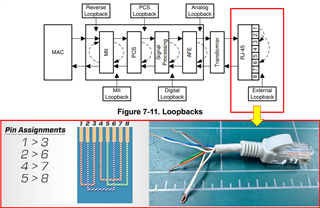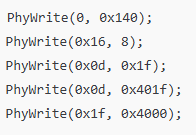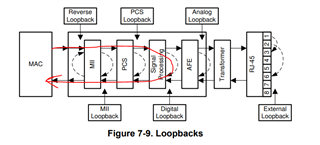Other Parts Discussed in Thread: DP83867IS
Tool/software:
Dear team,
I would like to know the flow for operating the 1G Near-END Loopback for the DP83867IS IC.
The flow I have in mind is as follows:
-
Connect RJ45 to the BD configured with MAC + PHY IC as shown below.

-
Power on.
-
Set the register as shown below. (I chose Analog Loopback as it has more steps than other Near-END Loopback modes, which I believe will make it more reliable.)

Q1. With this method, will the Analog Loopback work correctly?
Q2. After performing the loopback, how can we check if there is any damaged data during packet transmission?
Do we need to implement a separate message window?
Please let me know if there are any parts that need modification.
Thank you.


